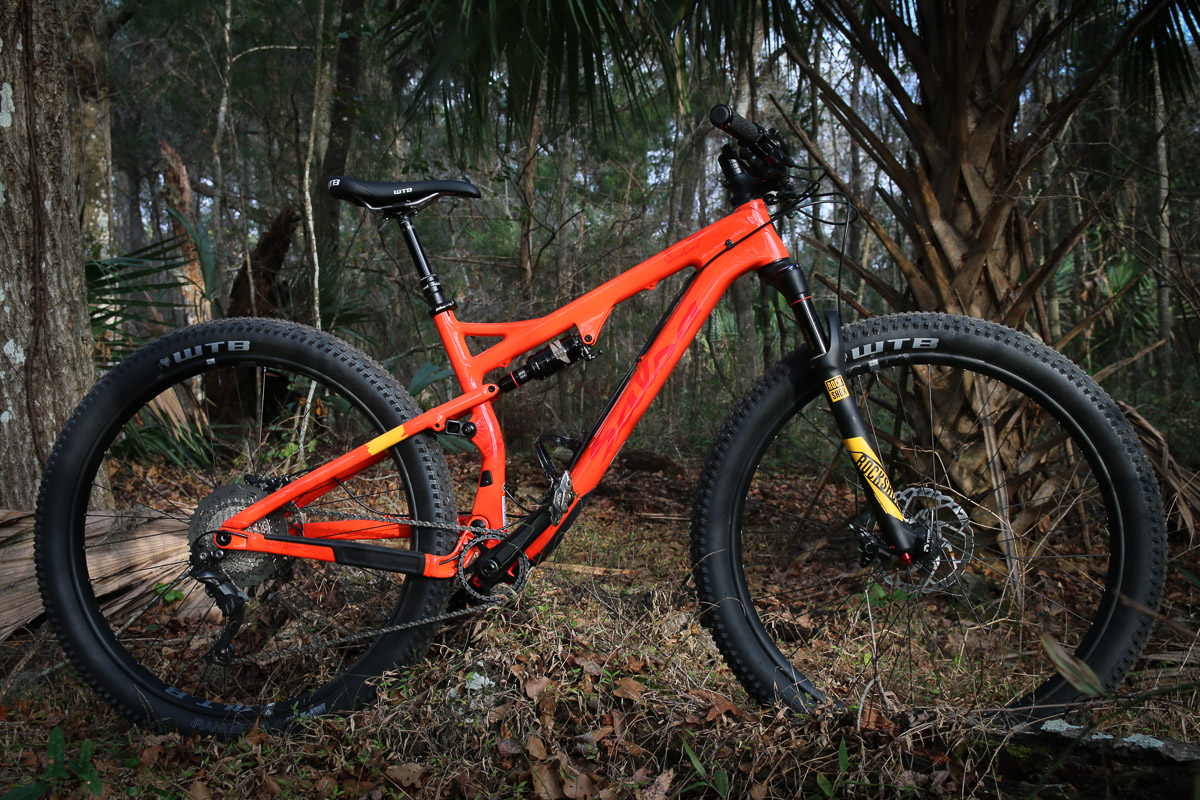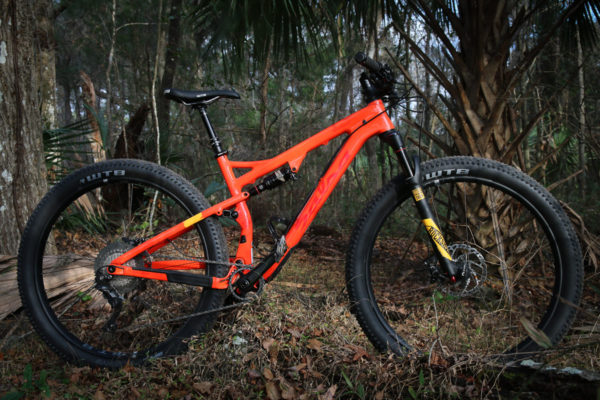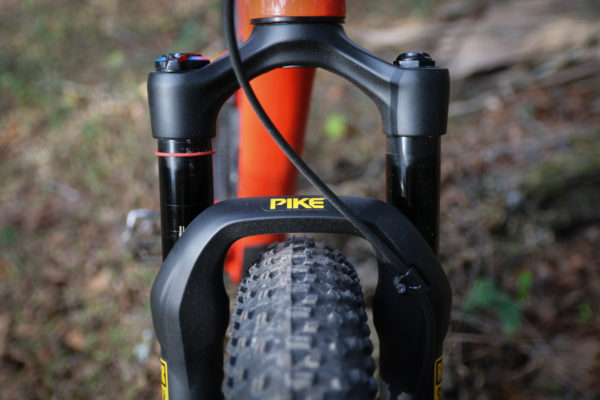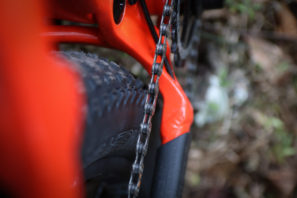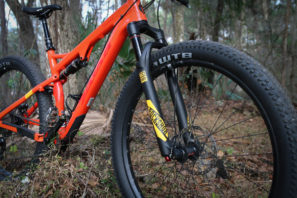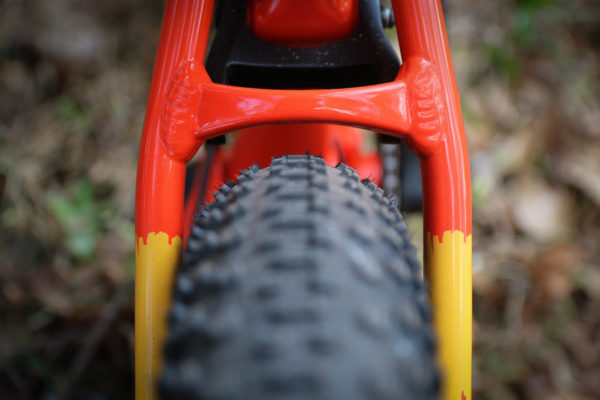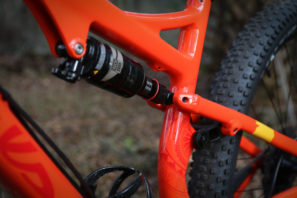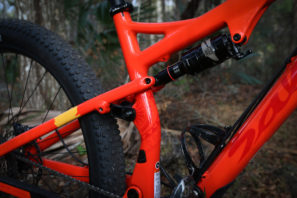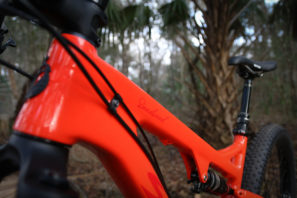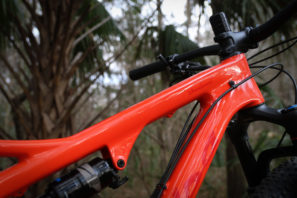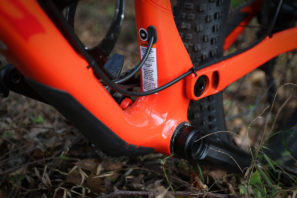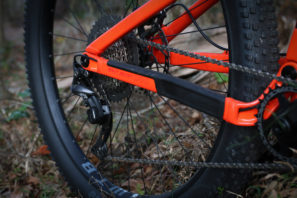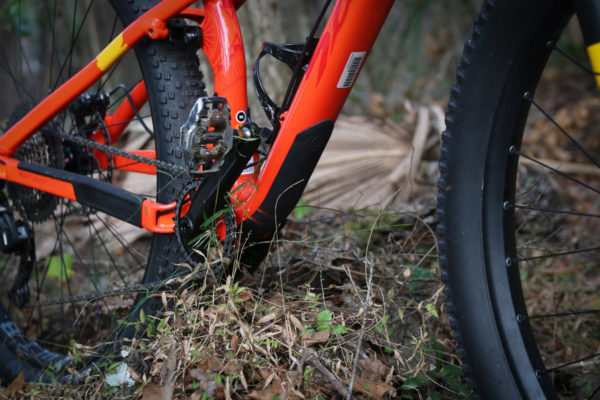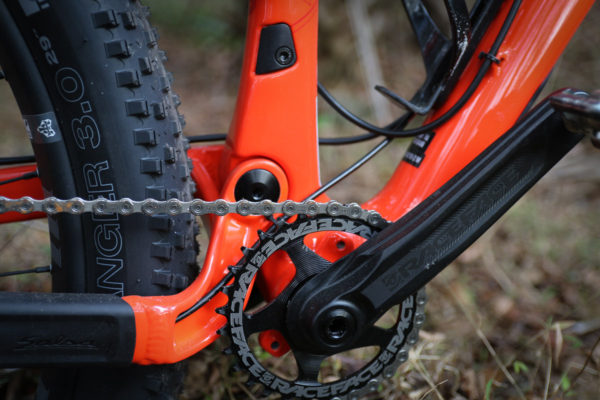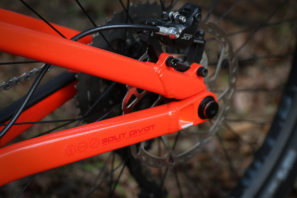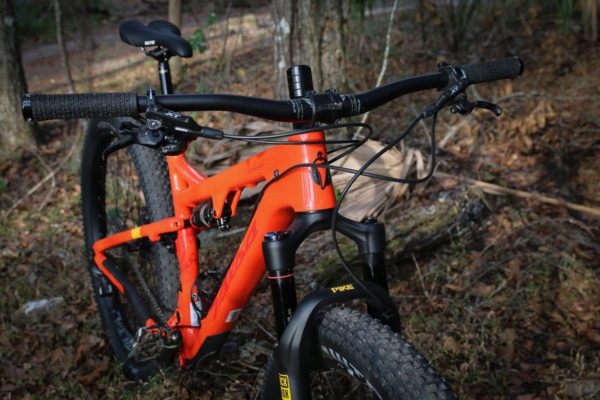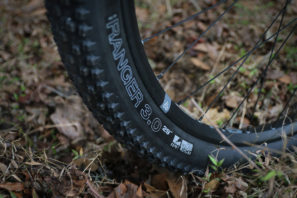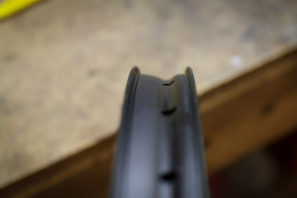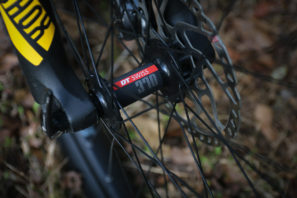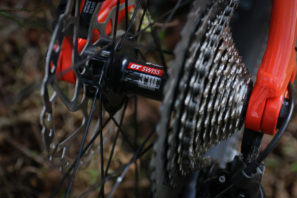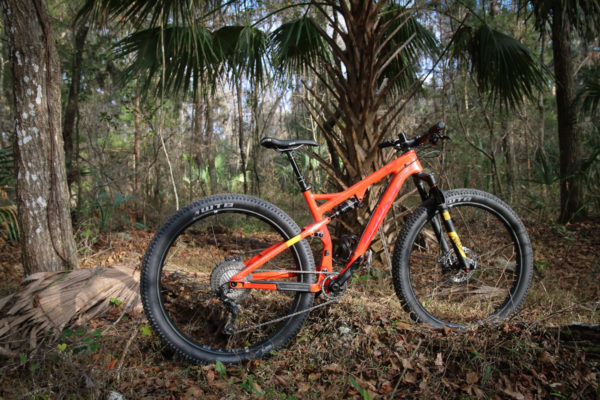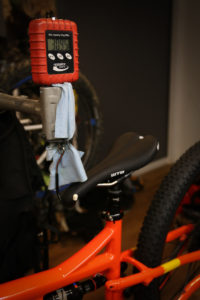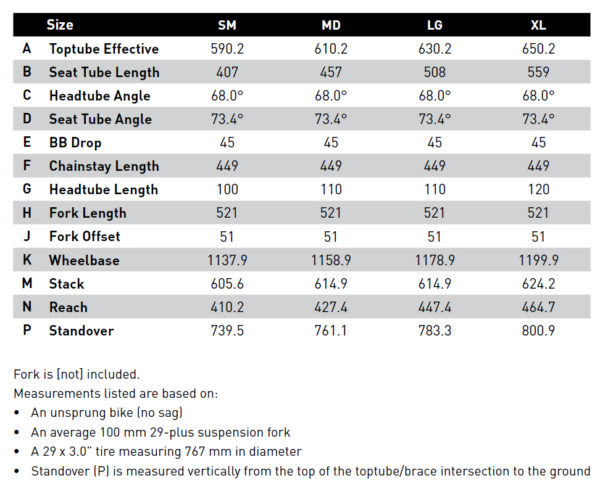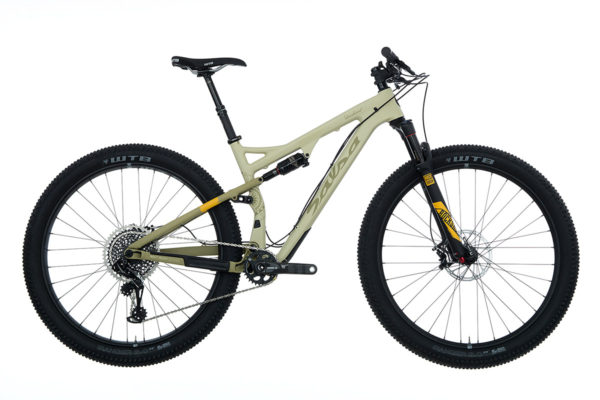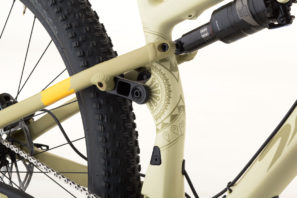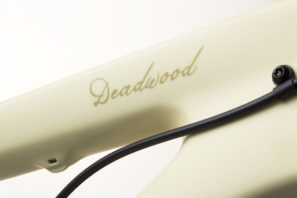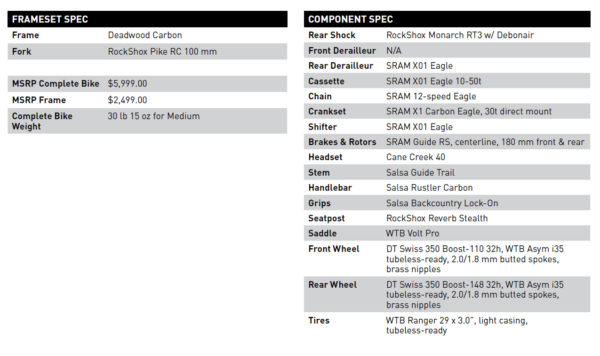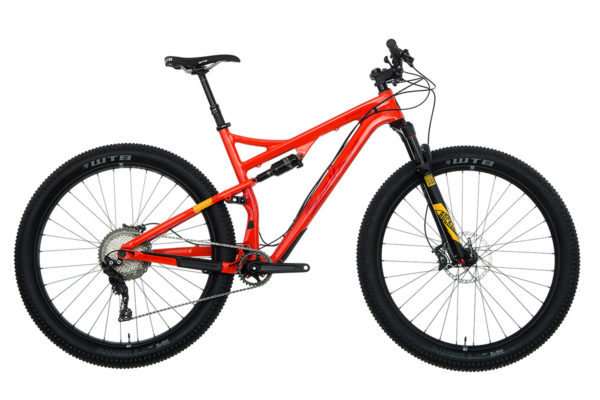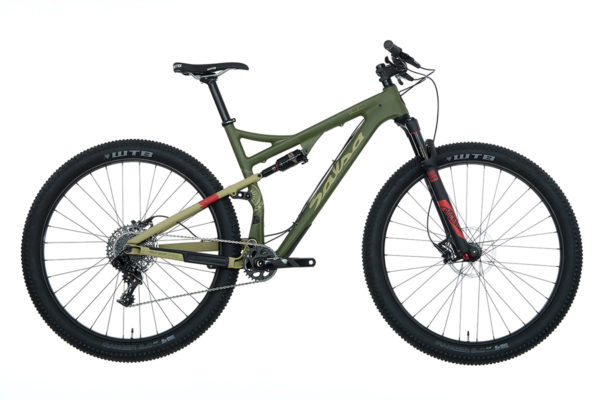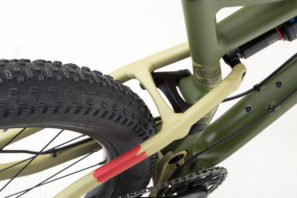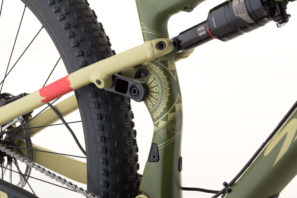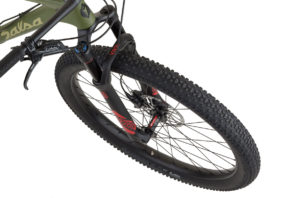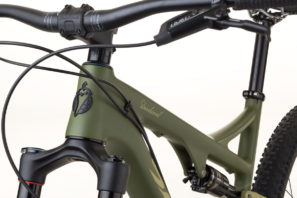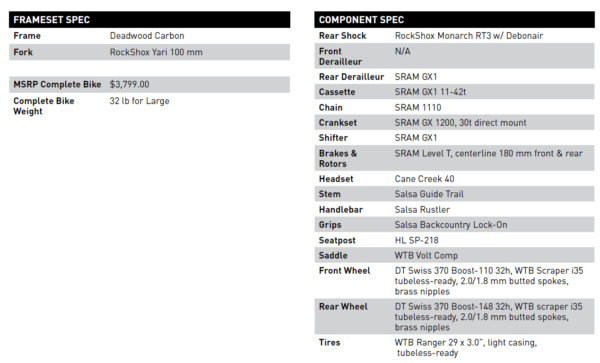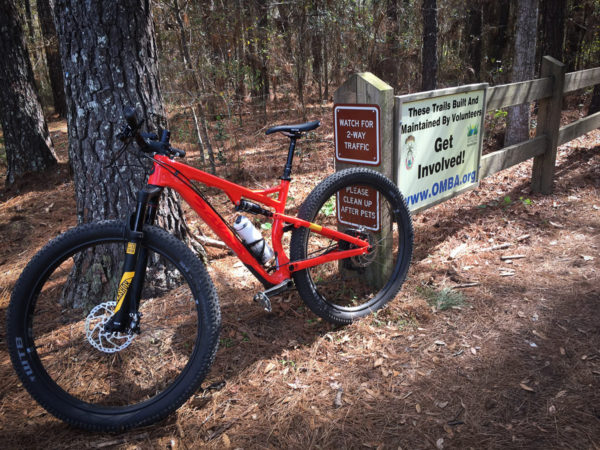You had to have known it was coming. Salsa, the brand known for their ‘Adventure by Bike’ ethos, has nearly every mountain bike wheel and tire size in hard tail and full suspension form – except one. The obvious hole in the line up was a full suspension frame built around the massive 29+ wheels and tires. That’s probably due to the fact that it’s not all that easy to cram such big tires into a frame that still accommodates suspension travel and in a way that will fit a number of people. But that doesn’t mean it’s impossible.
The proof? That would be the all new Deadwood SUS. At first glance, the Deadwood SUS doesn’t look all that different than a Salsa Spearfish 29. But look closer, and you’ll notice that those are not your average 29″ tires stuffed in there. Look even closer still, and you’ll see a bike that is build with a geometry that is equally at home sending burly rock lines as it is pushing your limits on big, back country epics…
Make no mistake, the Deadwood SUS is dedicated to the 29+ standard. Even at the extremes of tire size, there is ample tire clearance front and rear for more aggressive tires than the 29 x 3.0″ WTB Rangers that come stock on 35mm internal WTB Asym i35 rims (45mm rim max recommended). However, Salsa says that the bike is capable of running standard 29 x 2.35-2.5″ tires and that doing so will quicken the handling by shortening the trail and drops the bottom bracket to height to make it more similar to the Spearfish which essentially makes it an aggressive, short travel 29er.
That playful nature is reinforced by the RockShox Pike set at 100mm of travel. Even though it’s “short travel,” a fork this burly is a welcomed addition due to the bike’s abilities. The Deadwood SUS sees a bit less travel at the rear, with the RockShox Monarch RT3 Debonair shock managing 91mm of travel out of the Split Pivot suspension system. Offered in three builds, all three bikes use the same rear shock, while only the least expensive Carbon GX1 build deviates from the Pike RC 100 in favor of a RockShox Yari 100mm.
All three bikes also use a high modulus carbon fiber front triangle that is mated to an 6066-T6 aluminum chainstay and seatstay configuration. Salsa states that the carbon front triangle uses their Junction Control Molding technology that utilizes interior molds at all of the junctions for precise control of interior wall thickness and finish. Built around Boost 148 x 12mm spacing in the rear and 110 x 15mm spacing up front, the bottom bracket is a PF 41 x 92mm which will work with most standard cranksets in 1x and 2x configurations.
None of the stock builds include a 2x drivetrain, but the option is there to run a top pull High Direct mount front derailleur with a 29mm offset if you desire (32t max for 1x, 34/24t max for 2x). There’s also ISCG 05 tabs which hint at the bike’s rowdy personality.
Cable routing is almost completely external with the exception of the hollow chainstay where the full housing rear derailleur cable passes through and the internal dropper compatibility. Given the possibility this bike could end up in some fairly remote locations, this is probably a nice feature for back country repairs. The rear brake mount is pretty simple with a standard IS mount. Additional frame protection is provided through a molded chainstay and downtube protector.
The Deadwood SUS Carbon XT 1×11 build which is pictured above comes equipped with WTB 29 x 3.0″ Ranger Light/Fast casing TCS tires mounted to the WTB Asym i35 rims laced to a set of DT Swiss 370 6 bolt hubs with 2.0/1.8 DB spokes and brass nipples. In order to take full advantage of the fork’s stiffness, the front hub is also equipped with Torque caps which are said to improve front end stiffness by increasing the surface area of the connection between the hub and the dropout.
It should be noted that the bikes ship without any of the TCS components with the exception of the tire. So if you’re itching to ride, and ditch the tubes, you’ll need to order 40mm TCS rim tape, TCS valves, and the sealant of your choice. As I noted in the WTB tire post, this bike came equipped with Light/Fast casing tires at both ends, but for the sake of testing (and not getting flats while down South) I swapped out the rear for a Tough/Fast casing in the same Ranger 3.0 tread pattern. Even though I went to a heavier tire, by removing weight from going tubeless, the wheel still ended up a few grams less in the end. The front got substantially lighter.
Completely stock, the bike was just under 31lbs at 30.95lb (14.04kg). However, going tubeless got it just under the 30lb mark which isn’t exactly light, but then we’re talking about a lot of wheel and tire here.
The Deadwood SUS may have similar travel numbers to the Spearfish, but the geometry is fairly different. For starters, the 29+ machine has a longer top tube and reach, while the head tube is a bit more slack at 68° though the seat tube angle is almost identical at 73.4°. That adds up to a bike that is more stable and also more confident over more aggressive terrain.
At the top of the heap is the Deadwood SUS Carbon X01 Eagle which runs the obvious SRAM Eagle X01 drivetrain, but also has a few upgrades like a carbon bar for the $5,999 price tag. This bike will also be available in a frame only for $2,499.
The XT 1×11 build above drops the price to $4,499 with a Shimano XT 1×11 build using a Race Face Aeffect crank with a 30t chainring. 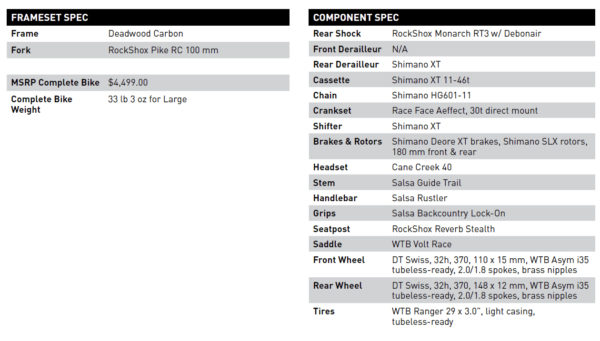
For their most affordable model, the Deadwood SUS gets the GX1 treatment to bring the price down to $3,799.
Available now, check out our first ride impressions over here!
